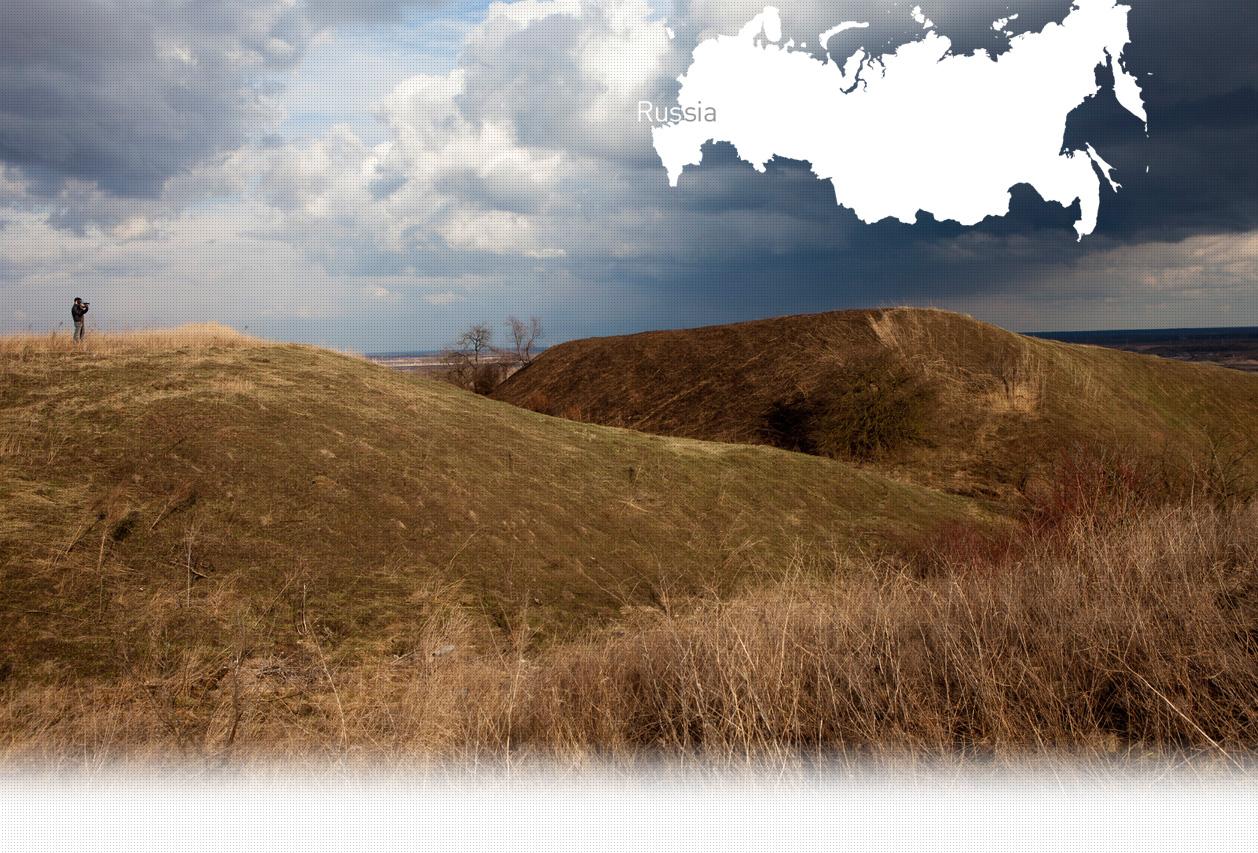

1 Killing site(s)
Zinaida B., born in 1923: “One day, policemen told the Jews: “we’re going to take you back home.” They were sent to Udobnaya and locked up in a building. They spent the night there. The next day I went there to say goodbye. I saw them in the courtyard with their belongings. A truck arrived and the Germans forced all the Jews onto it, threatening them with machine guns, and told them to leave their belongings behind in the courtyard. They all got on and the Germans closed the door. But I saw that they didn’t leave in the direction of Armavir. Later, my mother told me they had all been shot.” (Witness YIU/295R, interviewed in Udobnaya, on April 11, 2012)
“On September 16, 1942, upon order of the gendarmerie of the town of Cherkessk, all the Jewish families living on the territory of Zelenchuk Mostovoi, 19 people in total, were gathered on the “Boevik" kolkhoz and sent in direction of Cherkessk, where they were shot. In the first days of October, the German authorities declared that all the Jewish families were to be gathered in one single place to work at the “Molotov” kolkhoz, Udobnenskii district. Some of the Jewish families from Spokoinenskii district were taken there too. On October 14, the Jewish families were told to present themselves at the police station in the village of Udobnaya with their belongings, to be sent to Armavir. Children, elderly people, and women, numbering more than 370 people, were subsequently gathered. All these people were driven out of the village to the “May 1st” kolkhoz where they were shot. All their belongings were stolen by the German soldiers and policemen, some of them were burnt near the graves.” [Act drawn up on May 10, 1943 – GARF 7021-16-8, p.210]
Udobnaya is a village (stanitsa) in the Otradnenskii district, Krasnodar region, southwest Russia. It is located about 315 km (195mi) east of the city of Krasnodar. The town was founded in 1858. Because it was outside the Pale of Settlement at the time of the Russian Empire, no Jewish community was ever really established in Udobnaya, even after the Bolshevik revolution. As the war started between Nazi Germany and the Soviet Union in 1941 however, many Jews fled eastward and sought refuge in the Krasnodar region, including in Udobnaya. The refugees arrived in Armavir by train, were picked up by people working in the kolkhozes and brought to the village. The Jewish refugees were housed on the kolkhoz and worked there too. Sometimes, they came to the village to buy or trade some products, but they were often given things for free, as one witness remembers.
German forces took over Udobnaya on August 11, 1942. In October of the same year, they set out to round up all the Jews in the district and execute them. They were aided in this by the local auxiliary police. There was an announcement calling all Jews to gather at the police building in Udobnaya to be sent to Armavir and then ‘home’. Nearly 400 people, men, women, children, and elderly people, were gathered inside the police building for the night. Many Jews had tried to flee the village and the region when the Germans arrived by travelling through the mountains, but policemen and Germans set up check points and checked everyone’s identification papers. They also searched the carts. After one night locked in the police building, all the Jews were loaded onto trucks and forced to leave their belongings behind, which the Germans took for themselves. They were driven to a site near the river, at the "May 1st" kolkhoz. The Jews had to dig their own mass grave themselves. Two pits were dug, each about 6m long. Once this was done, they had to undress and then line up in groups of five next to the grave. They were shot at close range with a gun. Children under 10 were poisoned with a product spread on their mouth. Both mass graves were full of bodies by the time the shooting was over. The graves were closed, and the Germans took all of the Jews’ clothes with them. 22 partisans were also shot in Udobnaya according to a witness interviewed by Yahad - In Unum. Udobnaya was liberated by the Red Army on January 22, 1943. In total, between 370 and 400 Jews were killed in Udobnaya during the German occupation.
Do you have additional information regarding a village that you would like to share with Yahad ?
Please contact us at contact@yahadinunum.org
or by calling Yahad – In Unum at +33 (0) 1 53 20 13 17